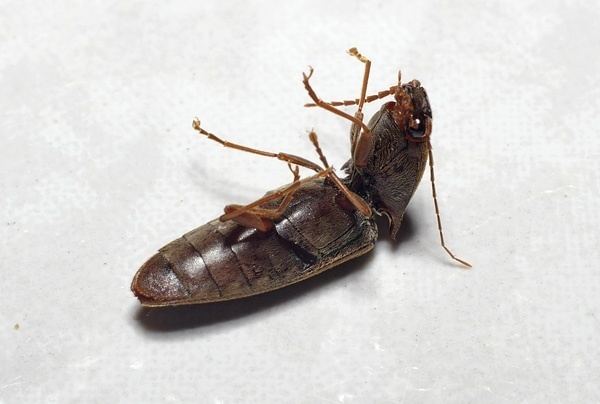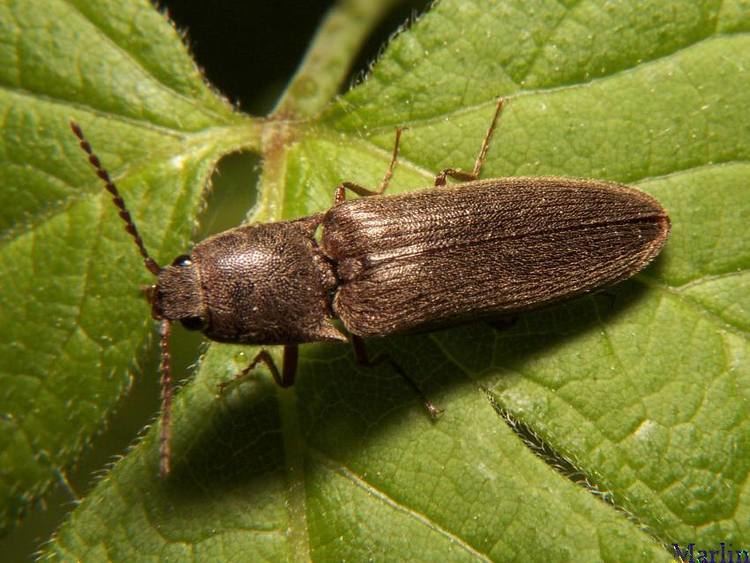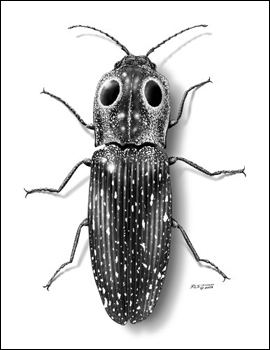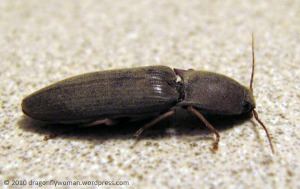Scientific name Elateridae | Order Beetle Rank Family | |
 | ||
Lower classifications Agriotes, Ampedus, Athous, Pyrophorus, Melanotus | ||
Insects in the family Elateridae are commonly called click beetles (or "typical click beetles" to distinguish them from the related families Cerophytidae, Eucnemidae, and Plastoceridae). Other names include elaters, snapping beetles, spring beetles or skipjacks. This family was defined by William Elford Leach (1790–1836) in 1815. They are a cosmopolitan beetle family characterized by the unusual click mechanism they possess. There are a few closely related families in which a few members have the same mechanism, but all elaterids can click. A spine on the prosternum can be snapped into a corresponding notch on the mesosternum, producing a violent "click" that can bounce the beetle into the air. Clicking is mainly used to avoid predation, although it is also useful when the beetle is on its back and needs to right itself. There are about 9300 known species worldwide, and 965 valid species in North America.

Description and ecology

Click beetles can be large and colorful, but most are under 2 centimeters long and dull in coloration and patterning. The adults are typically nocturnal and phytophagous, but rarely of economic importance. On hot nights they may enter houses, but are not pests. Click beetle larvae, called wireworms, are usually saprophagous, living on dead organisms, but some species are serious agricultural pests, and others are active predators of other insect larvae. Some elaterid species are bioluminescent in both larval and adult form, such as those of the genus Pyrophorus.

Larvae are slender, elongate, cylindrical or somewhat flattened, with relatively hard bodies, somewhat resembling mealworms. The three pairs of legs on the thoracic segments are short and the last abdominal segment is, as is frequently the case in beetle larvae, directed downwards and may serve as a terminal proleg in some species. The ninth segment, the rearmost, is pointed in larvae of Agriotes, Dalopius and Melanotus, but is bifid due to a so-called caudal notch in Selatosomus (formerly Ctenicera), Limonius, Hypnoides and Athous species. The dorsum of the ninth abdominal segment may also have sharp processes, such as in the Oestodini, including the genera Drapetes and Oestodes. Although some species complete their development in one year (e.g. Conoderus), wireworms usually spend three or four years in the soil, feeding on decaying vegetation and the roots of plants, and often causing damage to agricultural crops such as potato, strawberry, corn, and wheat. The subterranean habits of wireworms, their ability to quickly locate food by following carbon dioxide gradients produced by plant material in the soil, and their remarkable ability to recover from illness induced by insecticide exposure (sometimes after many months), make it hard to exterminate them once they have begun to attack a crop. Wireworms can pass easily through the soil on account of their shape and their propensity for following pre-existing burrows, and can travel from plant to plant, thus injuring the roots of multiple plants within a short time. Methods for pest control include crop rotation and clearing the land of insects before sowing.

Other subterranean creatures such as the leatherjacket grub of crane flies which have no legs, and geophilid centipedes, which may have over two hundred, are sometimes confused with the six-legged wireworms.


